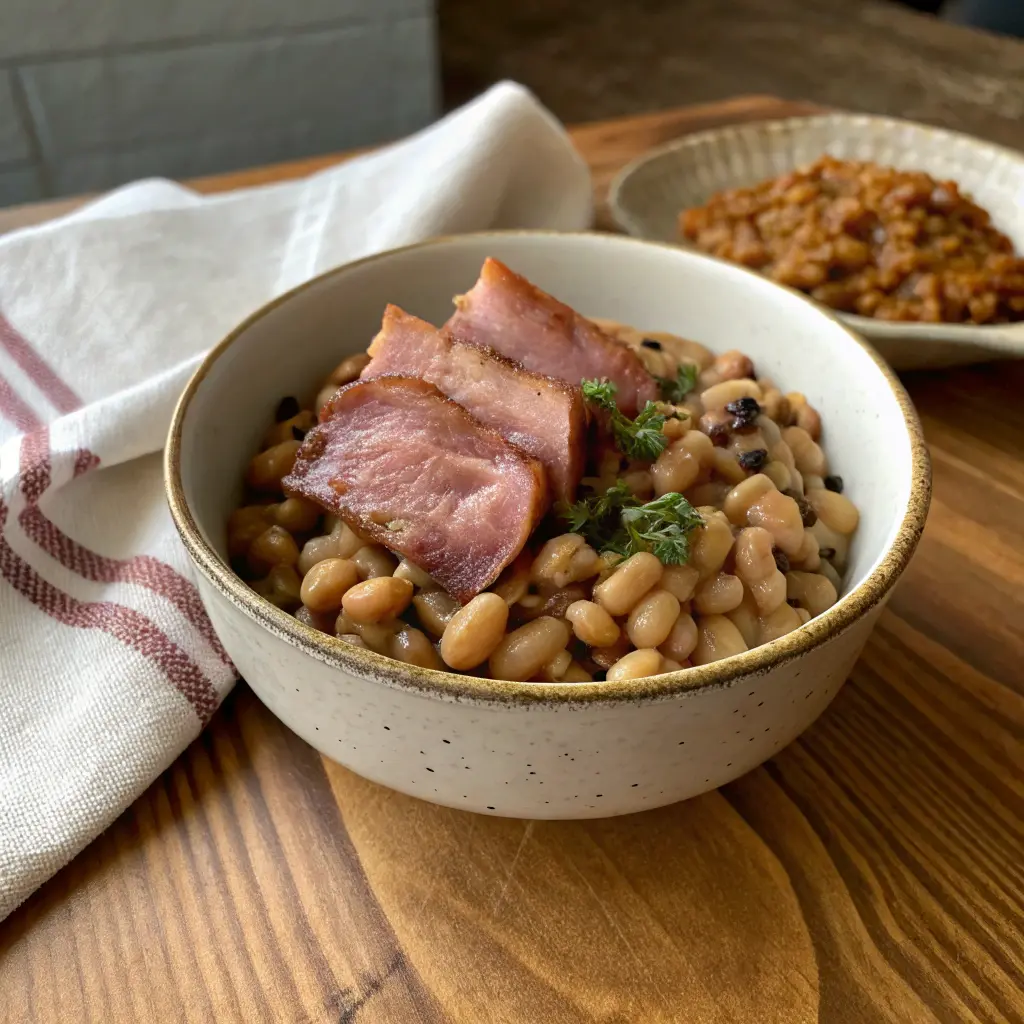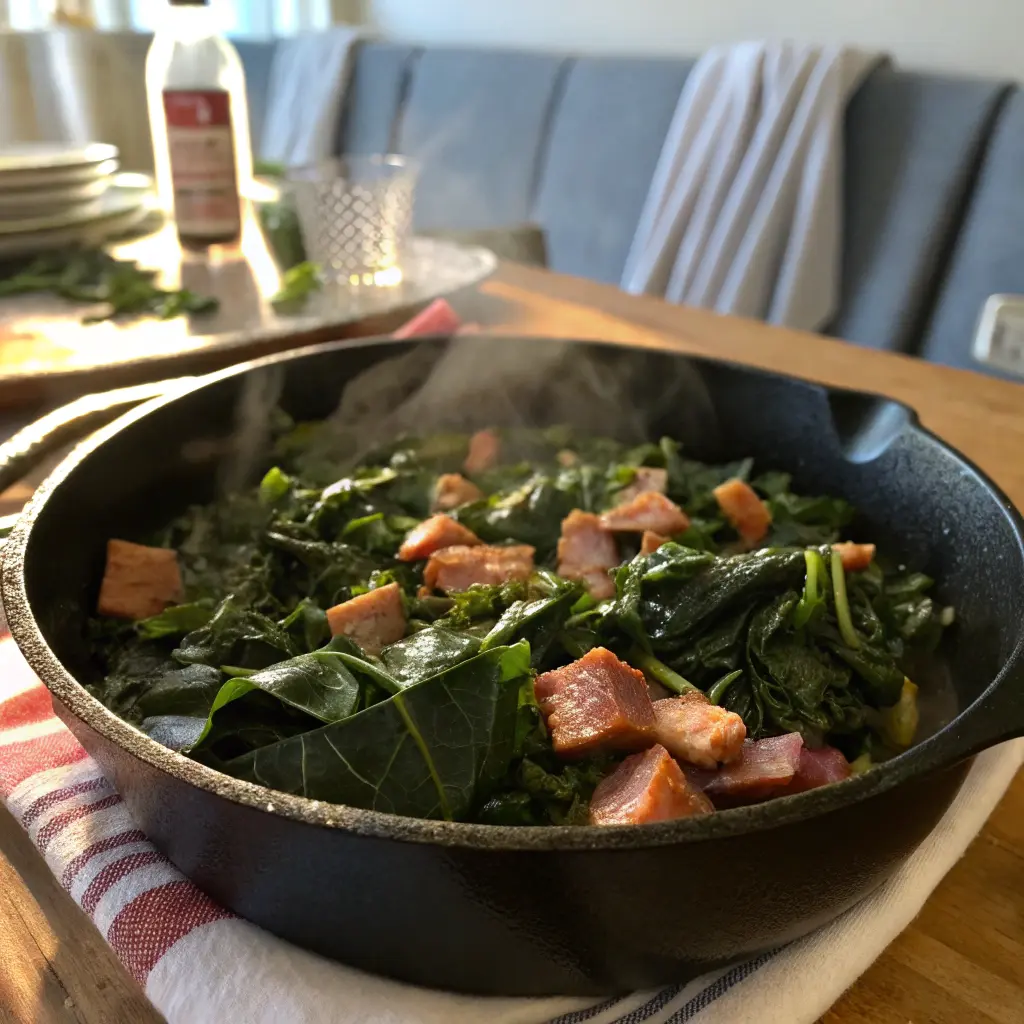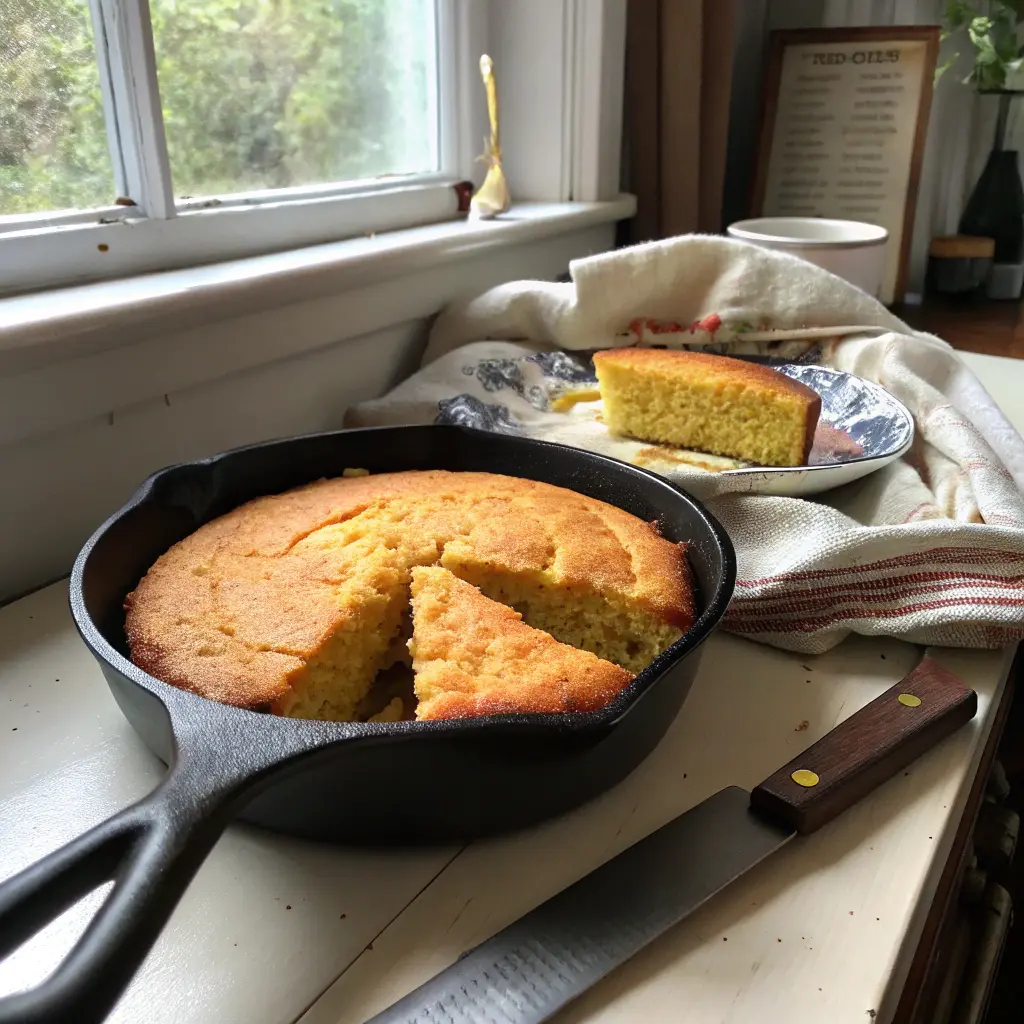New Year’s Day in South Carolina is not just about ringing in the new year—it’s about honoring rich food traditions that have been passed down through generations.
South Carolina New Year’s food traditions are steeped in symbolism and are believed to bring luck, prosperity, and happiness in the coming year.
From savory dishes like Hoppin’ John to the bright green hues of collard greens, the foods on the South Carolina table are more than just meals; they are rituals of hope, heritage, and fortune.
The Southern New Year’s Table: A Cultural Snapshot
When the clock strikes midnight on New Year’s Eve in South Carolina, families gather around the table to partake in meals that are as rich in culture as they are in flavor.
These dishes often blend African, European, and Gullah influences, creating a fusion of traditions unique to the region.
From the iconic black-eyed peas to the beloved pork dishes, South Carolina’s New Year’s food traditions are a reflection of the state’s diverse heritage and deep-rooted customs.
Why Food Traditions Matter in South Carolina
Food is more than sustenance in South Carolina; it is a symbol of prosperity, unity, and blessings for the future.
The culinary customs of the South are intertwined with superstitions and folklore, where certain foods are thought to bring good luck or ward off evil spirits in the new year.
Understanding these food traditions gives a glimpse into the heart of South Carolina’s cultural fabric.
Blending Heritage with Hope for the Year Ahead
The food you serve and eat on New Year’s Day in South Carolina holds significance beyond flavor.
Each dish carries a story—whether it’s the heritage of enslaved Africans or the practices passed down from European settlers.
South Carolina’s food traditions are a blend of these diverse histories, with the food acting as a vessel for hope and renewal as the new year begins.
Black-Eyed Peas: A Bowl of Prosperity
One of the most iconic dishes in South Carolina New Year’s food traditions is black-eyed peas. Eaten on New Year’s Day, black-eyed peas are believed to bring prosperity and good fortune in the coming year.
The round shape of the peas symbolizes coins, making them a powerful symbol of wealth and abundance.

History of Black-Eyed Peas on New Year’s Day
The tradition of eating black-eyed peas for good luck is deeply rooted in African American culture, with origins dating back to the Civil War.
In the South, black-eyed peas became a symbol of hope after the Confederacy’s defeat. Families would eat them on New Year’s Day to ensure a year of financial prosperity and health.
Best Ways to Prepare Them Southern Style
To prepare black-eyed peas in true Southern style, many families simmer them with smoked ham hocks or bacon for added flavor.
They are often paired with rice or served alongside collard greens and cornbread, making for a meal that is both hearty and rich in tradition.
Collard Greens: The Color of Cash
Collard greens are another essential part of the South Carolina New Year’s table. Their dark, leafy greens are said to symbolize money, with their vibrant color representing cash. Eating collard greens is believed to bring financial success in the new year.

Symbolism of Greens for Wealth
The tradition of eating collard greens on New Year’s Day stems from the belief that the greens, which resemble paper currency, will bring wealth and financial stability.
This practice is common not just in South Carolina, but across the Southern United States, where collard greens are often served alongside other traditional New Year’s dishes.
Traditional Family Recipes Passed Down Generations
Every South Carolina family has its own way of preparing collard greens. Some simmer them with smoked meat for flavor, while others may add vinegar and pepper for an extra kick.
These recipes have been passed down for generations, connecting families to their ancestors and preserving traditions for future generations.
Cornbread: Golden Symbol of Wealth
No South Carolina New Year’s feast is complete without a side of cornbread. Cornbread is golden in color, symbolizing wealth and prosperity, making it a fitting addition to the New Year’s meal.
Whether served as a muffin, a skillet bread, or as cornbread dressing, this dish is a Southern staple.
How Cornbread Completes the Meal
Cornbread’s role on the table goes beyond just flavor; it serves as a perfect complement to dishes like black-eyed peas, collard greens, and pork.
Its sweetness balances the savory dishes, creating a well-rounded and satisfying meal that encapsulates Southern hospitality.
Regional Variations and Sweet vs. Savory Debate
In South Carolina, cornbread can vary greatly depending on region and personal preference. Some prefer their cornbread sweet, while others stick to a more savory style. Regardless of the variation, cornbread remains a beloved part of the New Year’s tradition, representing abundance and good fortune.

Hoppin’ John: The Ultimate Carolina Staple
Hoppin’ John is another dish that is central to South Carolina New Year’s food traditions. This dish, made with black-eyed peas, rice, and pork, is believed to bring good luck and prosperity in the new year.
Origins of the Dish
Hoppin’ John has roots in the Gullah culture of the Lowcountry, an area that encompasses parts of South Carolina, Georgia, and Florida.
The dish’s origins date back to the 19th century, when African slaves brought their culinary traditions to the region. Over time, it became a staple of New Year’s Day celebrations in the Carolinas.
How to Make Hoppin’ John Like a Local
To make Hoppin’ John like a local, simmer black-eyed peas and rice together with smoked pork, such as ham hocks or sausage.
Add a touch of seasoning like onion, garlic, and pepper for depth of flavor. This hearty, flavorful dish is often served alongside collard greens and cornbread for a complete meal that embodies the hope and blessings of the new year.
Pork Dishes for Progress
Pork dishes are another important part of South Carolina New Year’s food traditions. Pork symbolizes progress, as pigs root forward in search of food, making them a powerful symbol of moving forward in life. Smoked ham, pork roast, and hog jowls are common choices on New Year’s Day.
Smoked Ham, Hog Jowls, and Pork Roast Traditions
Each pork dish carries its own significance. Ham is a traditional choice, as it symbolizes abundance, while hog jowls, often served alongside black-eyed peas, are thought to bring luck and good fortune.
Pork roast, with its tender and flavorful meat, is often enjoyed by families across the state as part of their New Year’s feast.
Why Pork (and Not Poultry) Is Eaten for Luck
In many cultures, poultry is avoided on New Year’s Day because chickens scratch backward, symbolizing a return to the past.
In contrast, pigs root forward, symbolizing progress and growth. This is why pork is the meat of choice for bringing good luck in the new year.
Rice and Gravy: The Underrated Sidekick
Rice and gravy is often considered a humble dish, but in South Carolina, it’s an essential part of the New Year’s meal.
Rice symbolizes fertility and abundance, while gravy adds richness and flavor to the dish. Together, they create a comforting side that perfectly complements the other foods on the table.
Sweet Tea and Southern Hospitality
No meal in South Carolina is complete without a glass of sweet tea. This refreshing drink is a staple of Southern hospitality, and it perfectly complements the rich flavors of the New Year’s dishes.
Superstitions & Do’s and Don’ts on New Year’s Day
New Year’s Day in South Carolina is filled with superstitions and customs meant to ensure good fortune. Some believe that you must eat your black-eyed peas before noon for them to bring luck, while others avoid serving poultry to prevent bad luck.
Whatever your tradition, these rituals are an important part of the cultural fabric of South Carolina.
South Carolina Food Traditions in Modern Times
While the core of South Carolina New Year’s food traditions remains the same, many families are now incorporating modern twists and substitutions into their meals. However, the spirit of hope and prosperity that these dishes represent is still very much alive.
How Traditions Are Kept Alive Today
South Carolina families continue to honor these food traditions, keeping the recipes and rituals alive for future generations.
With many families passing down their recipes, the connection between food and culture remains strong in the state.
Influence of African, Gullah, and European Roots
The influence of African, Gullah, and European culinary traditions is evident in South Carolina’s New Year’s meals.
These traditions blend together to create a unique culinary experience that reflects the state’s diverse history.
How to Host a Traditional South Carolina New Year’s Feast
Hosting a South Carolina New Year’s feast requires more than just preparing the food—it’s about creating a welcoming atmosphere for friends and family to gather and celebrate.
Menu Planning and Prep Tips
When planning a South Carolina New Year’s feast, focus on the key dishes that bring luck and prosperity: black-eyed peas, collard greens, cornbread, pork, and Hoppin’ John. Prep your ingredients ahead of time to ensure everything is ready for the big day.
Decor, Music, and Creating a Welcoming Atmosphere
Decorate your home with Southern charm, perhaps with fresh flowers or festive table settings. Play some traditional Southern music to add to the atmosphere and create a warm, inviting space for everyone to enjoy the meal.
Nutritional Value of Traditional New Year’s Dishes
While these dishes are deeply symbolic, they also offer nutritional benefits. Black-eyed peas are high in protein and fiber, collard greens are rich in vitamins, and pork provides essential nutrients like protein and iron.
Common Substitutions and Modern Twists
For those looking to make modern twists on traditional dishes, consider using kale in place of collard greens or experimenting with cornbread flavors. Many families are also opting for vegetarian versions of dishes like Hoppin’ John, using plant-based ingredients for a modern take on tradition.
Recipe: Authentic Hoppin’ John with Greens and Cornbread
Try this traditional recipe for Hoppin’ John, collard greens, and cornbread to bring luck and prosperity to your New Year’s table!
FAQs About South Carolina New Year’s Food Traditions
Why are black-eyed peas lucky?
Black-eyed peas are believed to bring prosperity and financial success for the year ahead.
What’s the story behind collard greens and money?
The green color of collard greens symbolizes cash and wealth.
Can I substitute kale for collards in Southern dishes?
While kale can be used, collard greens are preferred for their texture and flavor.
Is pork always served for New Year’s in South Carolina?
Yes, pork symbolizes progress and is considered essential for bringing good luck.
Do people still eat Hoppin’ John today?
Yes, Hoppin’ John remains a beloved dish in South Carolina’s New Year’s food traditions.
How did these food traditions originate?
These traditions have roots in African, Gullah, and European cultures and have been passed down for generations.
Final Thoughts: Eating With South Carolina New Year’s Food Traditions and Joy
South Carolina’s New Year’s food traditions offer more than just delicious meals—they provide a meaningful way to connect with the past, celebrate the present, and look forward to a prosperous year ahead.
By embracing South Carolina New Year’s Food Traditions , families honor their heritage while creating new memories around the dinner table. Whether you’re leaning on comforting Frozen Family Meals for busy nights or drizzling Peppercorn Ranch over a fresh salad, every dish becomes part of the story.

